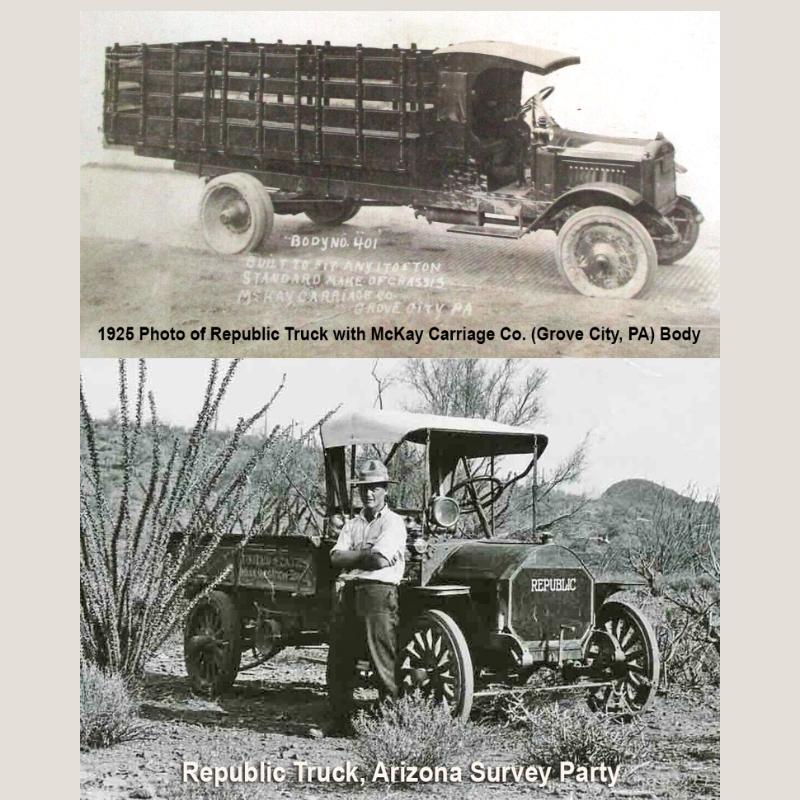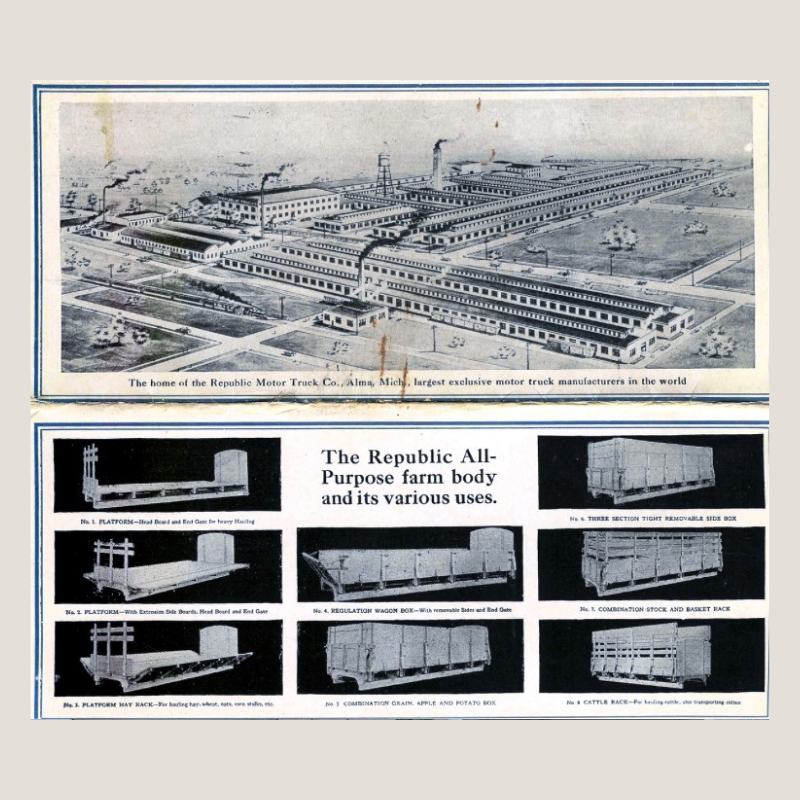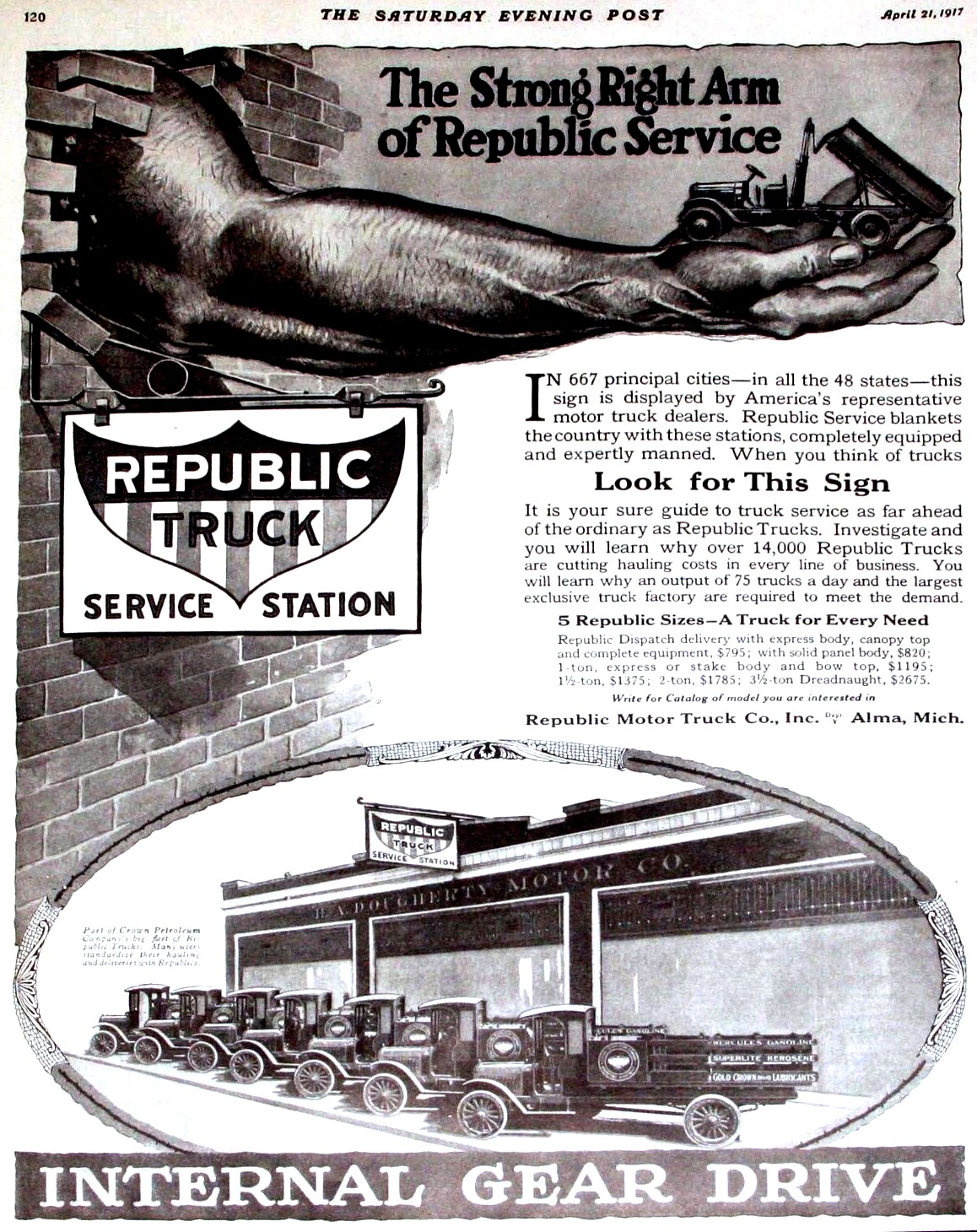
In the early days of motorized freight, a small Michigan outfit set out to redefine the truck industry. Founded in 1913 by Ammi Wright and Clarence Hamilton in Alma, Republic Motor Truck Company grew quickly from its modest origins into one of the nation’s major producers, building vehicles that would come to be known for their durability and dependability.
Republic’s product lineup wasn’t defined by flashy model names. Instead, each truck was identified by its intended capacity—ranging from a ¾-ton workhorse ideal for local deliveries (often simply known as the Model T) to the heavier, more robust models like the 1-ton Model 10 and the 2½-ton Model 25. Designed with practicality in mind, these trucks featured engines from trusted suppliers like Continental and Waukesha, along with either chain or shaft drive, depending on the truck’s purpose.
A particularly interesting chapter in Republic’s story came in 1918, when its reach extended into Canada. One Republic truck, sold through the Begg Motor Company in Toronto, became a rare example of the brand’s international presence. In markets where simplicity and rugged performance were prized, Republic trucks found loyal customers—farmers, municipal buyers, and even independent freight operators who needed vehicles that could withstand the harsh conditions of early 20th-century transportation.
During World War I, the company’s reputation soared. Republic was one of the main manufacturers of the Standardized Class B “Liberty” truck—a model that saw service hauling troops, supplies, and equipment overseas. Nearly half of the 10,000 Liberty trucks produced came off Republic's assembly lines. This wartime contract not only cemented the company’s standing as a dependable manufacturer but also led to a production peak that set the stage for its nationwide expansion.
By the early 1920s, Republic boasted a vast network of over 3,000 dealers and service centers, earning the bold claim of being “The Motor Truck Supreme.” Its product line expanded further, including enclosed cabs and refined styling, culminating in models like the Republic “Junior” Series, a late-1920s light-duty truck designed to compete with Ford’s expanding commercial line.
Yet, rapid growth and ambitious mergers can come with risks. In the mid-1920s, Republic joined forces with American-LaFrance—a move that, despite its promising potential, led to internal challenges as the companies struggled to integrate their very different products and cultures. As the Great Depression took hold, even a once-thriving enterprise like Republic could not withstand the economic headwinds, and by the early 1930s, the Republic name began to fade from American roads. Today, Republic is remembered for its role in shaping the early truck industry and remains part of the larger story of American manufacturing.
Preserve the legacy of trucking and connect with fellow enthusiasts by becoming a member of the American Truck Historical Society. Whether you're passionate about historic trucks, or the people who built the industry, ATHS offers exclusive archives, events, and a community that shares your love for the open road. Don't miss out-join or renew your membership today! Visit www.aths.org/membership/become-a-member/ to get started.


